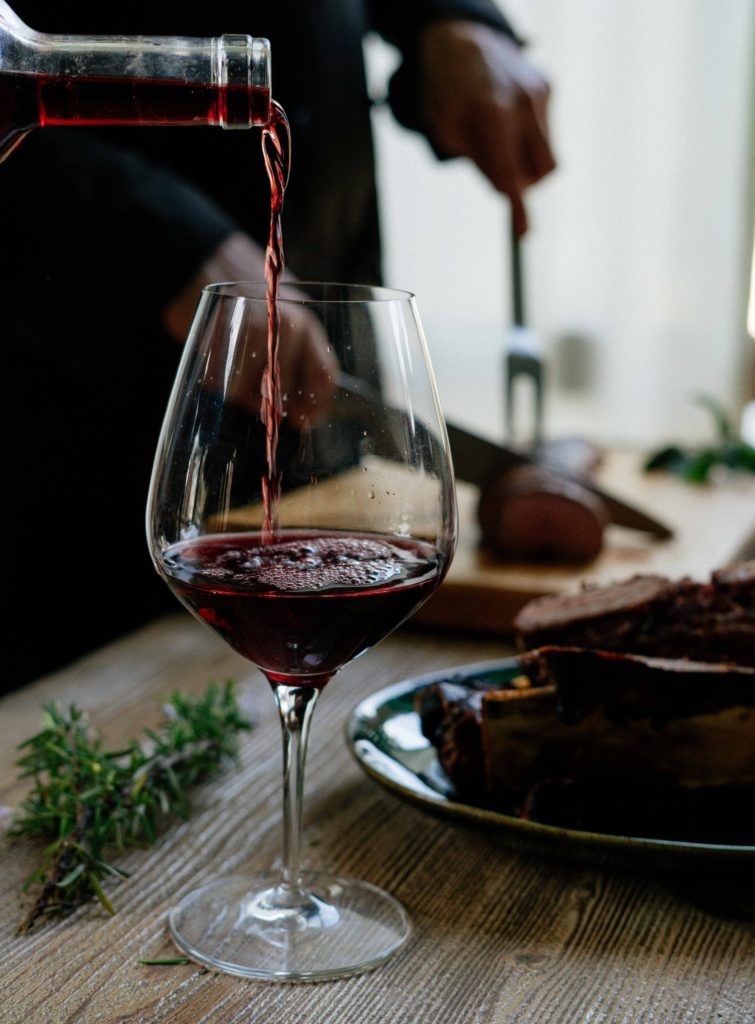For many people that are uninterested in the world of wine, there are only two types: white and red. But we all know that the list does not stop there, as there are dozens of varieties hailing from the best wine-growing regions around the world.
Supreme wine can come from many different growing areas, including Napa Valley in California, Tuscany in Italy, or Mosel in Germany. However, some of the highest quality wines with the richest history hail from the Bordeaux region of France.
Merlot and Cabernet Sauvignon were both born in the historical region of Bordeaux in Southwestern France. Each wine was cultivated on opposite sides of a river, each with its own “terroir,” or growing conditions.
The river created a friendly rivalry, and Merlot and Cabernet were each developed independently of each other, yet they are closely related.
The famous opening line of Charles Dickens’s classic book, A Tale of Two Cities, depicts the dark drama of the French Revolution: “It was the best of times, it was the worst of times.” In our story today, “A Tale of Two Wines,” Merlot and Cabernet can be summed up in a similar, yet simpler way: “It was the best of wines.”
Wine from the Bordeaux Region
The Bordeaux region of France is the birthplace of both Merlot and Cabernet Sauvignon. The Gironde river splits the area into “Merlot” and “Cabernet” regions. The left bank of the river predominately grows Cabernet Sauvignon grapes, while the right bank focuses on Merlot grapes.
The two grapes are certainly similar, as they are derived from the same parent grape. Cabernet Franc grapes, also known as “Bouchet” in the Bordeaux region, are still grown today.
Grape growers in 16th and 17th century France experimented with breeding and developed the Merlot and Cabernet Sauvignon varieties. Cabernet Franc is often combined with its “child” grapes to create Bordeaux blends.
A Bordeaux red blend is a combination of Merlot, Cabernet Sauvignon, and/or Cabernet Franc grapes. A “Left Bank” Bordeaux will be a Cabernet-heavy blend, while a “Right Bank” blend will usually feature Merlot. A bottle of Bordeaux wine is a great way to explore the general characteristics of Merlot and Cabernet. Afterward, you can explore specific varieties of the two wines and discover the subtleties and characteristics that make each one different.
Merlot Wine: The Crowd Pleaser
The name Merlot comes from an old French word meaning “Little Blackbird.” The dark, nearly black colored grapes feature soft and fruity flavors. Merlot and Merlot-featuring blends are known to be drinkable at a younger age than most wines. As a result, the wine requires less storage time, leading it to be a favorite of wine producers.
Common food pairings include beef, cheese, chicken, and fruit. A typical Merlot wine will be dry (as opposed to sweeter red varieties, such as Zinfandel and Port). Merlot has been known to take on different flavors, depending on the region and winemaking techniques used.
Noted flavors you will find in merlots include cocoa, plums, cherries, and herbs. When aged in French oak casks, the wine can take on “woody” notes in addition to vanilla and cloves.
When grown in the cool climates of France, Merlot’s ABV usually hovers around 13 to 14 percent. When the grapes are grown in warmer regions like California, the resulting wine tends to have around 15 percent ABV.
Due to Merlot’s worldwide popularity, the grapes have often been overproduced and rushed to market. These low-quality wines are nothing like the Merlot of the Bordeaux region and should not be considered an accurate representation of the historic region.
However, many high-quality wines are produced in the U.S., Australia, and other parts of the world. Research is widely available on finding brands that you can trust.
To produce high-quality, full-flavored wines, care, and knowledge have to go into the production process. When a certain wine is grown only to capitalize on the popularity of the “Merlot” name, shortcuts are often taken, and quality is often sacrificed. Buyer beware!

Cabernet Sauvignon: The Mature Cousin Of Merlot
Cabernet Sauvignon is a heartier, more mature variety of red wine. The tannins are more pronounced in this variety, leading to the drying, astringent mouthfeel common in many wines. This is especially true when the wine is not left to age as long as the grapes deserve.
If the tannins are too pronounced, decanting the wine for up to an hour can oxygenate and mellow out the flavors.
Cabernet Sauvignon is known to have a strong “backbone,” referring to its bold mouthfeel and the ability to be paired with succulent dishes such as braised ribs, fine steaks, and portobello mushrooms.
The wine is one of the “driest” red varieties, topped only by a few types such as Sangiovese and Tempranillo. Similar to Merlot, the ABV of Cabernet Sauvignon is usually around 14 percent, with warmer climates producing wines around 15 percent.
In general, Cabernet has a darker, deeper hue than Merlot. The grape was produced by crossing Cabernet Franc with Sauvignon Blanc grapes. The high level of tannins are what keeps winemakers experimenting and aging Cabernet Sauvignon longer and longer. The flavors change and mature as the wine ages.
The flavors are enhanced even more when the wine is aged in French oak casks.
Cabernet Sauvignon was developed and grew in popularity due to the Bordeaux region’s ingenuity and dedication to the winemaking process. However, in the 1970s, the wine exploded in popularity after Napa Valley winemakers perfected the wine.
In 1976, the “Judgement of Paris,” a wine-tasting competition in Europe, ranked the Napa Valley iteration of Cabernet Sauvignon ahead of the French variety in a blind taste test. After that, the popularity of Cabernet Sauvignon skyrocketed, and it became a staple red wine pairing with steaks and other fine dishes.
At one point, Cabernet Sauvignon was the most widely grown grape in the world. In the 1980s and 1990s, Merlot started to gain popularity and eventually took over Cabernet Sauvignon. To this day, the two are loved worldwide and leading examples of great red wines.
Great Wines Drink Alike
The two grapes, Merlot and Cabernet Sauvignon, were derived and originally produced in the same region, leading to many similarities. Many people who do not regularly drink wine may not be able to tell the difference. However, when you take a closer look, the differences are stark and even scientific at times.
The soil in which the grapes are grown plays a huge impact on the production and flavor of any wine. A Cabernet Sauvignon produced in the Napa Valley region is known to have tasting notes of graphite, blackberry, and tobacco.
A Cabernet wine produced in its native region of Bordeaux may feature tasting notes such as plum, black currant, and anise.
The differences that are easiest to notice and understand include dryness and body. While both wines are dry, the Merlot will have a sweeter tint to it, making it easier to drink and pair with a wide variety of foods.
The Cabernet Sauvignon is dryer and bolder, leading it to be paired with more decadent foods, such as steak and ribs.
Are you inspired to do a red wine tasting after gaining all of this knowledge? Are you looking to mix up some sangrias for your next get-together? In any case, Saucey has you covered. If you are looking for Saucey wine delivery in your city, peruse our selection online.
With a full selection of wine, beer, and liquor, you are sure to find what you are looking for. Not only do they have what you need, but they will have it delivered to you in minutes!



